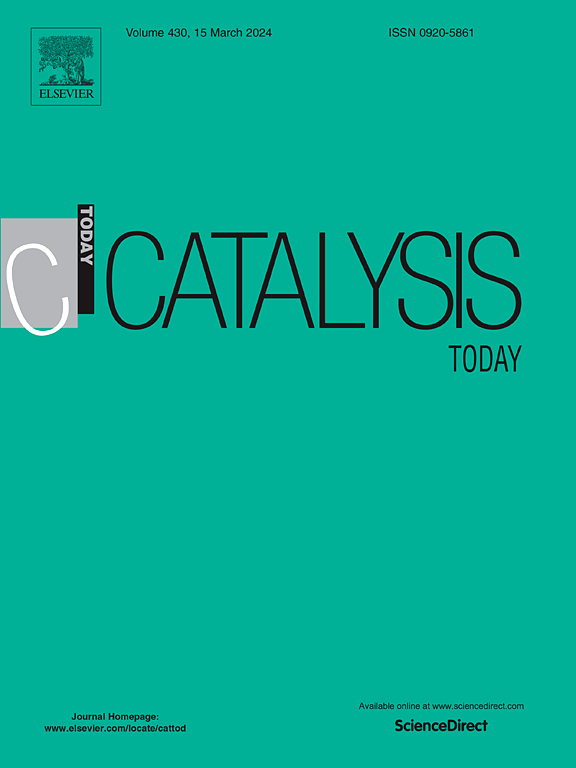分子水平上的 Müller-Rochow 过程中二甲基二氯硅烷(M2)的形成
IF 5.2
2区 化学
Q1 CHEMISTRY, APPLIED
引用次数: 0
摘要
在 Müller-Rochow 工艺或直接工艺中,CH3Cl 与硅发生反应,形成 (CH3)2SiCl2 (M2),并以铜为催化剂。这一复杂且高度异构的过程在气固搅拌流化床反应器中进行。本研究采用密度泛函理论(DFT)研究了在富含铜的铜硅模型上形成 (CH3)2SiCl2 的过程。结果表明,整个反应是外能反应。CH3Cl 解离后,反应首先通过 CH3 与 Si 的相互作用进行,然后再加入 Cl。在第二次 Si-Cl 键形成过程中发现了最大的活化障碍,在此过程中形成了弱吸附 (CH3)2SiCl2。与 CH3Cl 解离时形成的吸附 CH3 的脱氢相比,在硅修饰的 Cu(111) 模型上,M2 的形成在能量上更有利。本文章由计算机程序翻译,如有差异,请以英文原文为准。
Formation of dimethyldichlorosilane (M2) in the Müller-Rochow process at the molecular level
In the Müller-Rochow process or direct process, CH3Cl reacts with silicon, forming (CH3)2SiCl2 (M2) as the dominant species with copper as catalyst. This complex and highly heterogeneous process takes place in a gas-solid stirred fluidized bed reactor. In this study, the formation of (CH3)2SiCl2 on a Cu rich Cu-Si model has been investigated using density functional theory (DFT). The results show that the overall reaction is exoergic. Upon dissociation of CH3Cl, the reaction proceeds first by interaction of CH3 with Si followed by subsequent addition of Cl. The largest activation barrier is found for the second Si-Cl bond formation in which a weakly adsorbed (CH3)2SiCl2 is formed. Compared to dehydrogenation of adsorbed CH3 formed upon dissociation of CH3Cl, formation of M2 is energetically favoured on a Si modified Cu(111) model.
求助全文
通过发布文献求助,成功后即可免费获取论文全文。
去求助
来源期刊

Catalysis Today
化学-工程:化工
CiteScore
11.50
自引率
3.80%
发文量
573
审稿时长
2.9 months
期刊介绍:
Catalysis Today focuses on the rapid publication of original invited papers devoted to currently important topics in catalysis and related subjects. The journal only publishes special issues (Proposing a Catalysis Today Special Issue), each of which is supervised by Guest Editors who recruit individual papers and oversee the peer review process. Catalysis Today offers researchers in the field of catalysis in-depth overviews of topical issues.
Both fundamental and applied aspects of catalysis are covered. Subjects such as catalysis of immobilized organometallic and biocatalytic systems are welcome. Subjects related to catalysis such as experimental techniques, adsorption, process technology, synthesis, in situ characterization, computational, theoretical modeling, imaging and others are included if there is a clear relationship to catalysis.
 求助内容:
求助内容: 应助结果提醒方式:
应助结果提醒方式:


